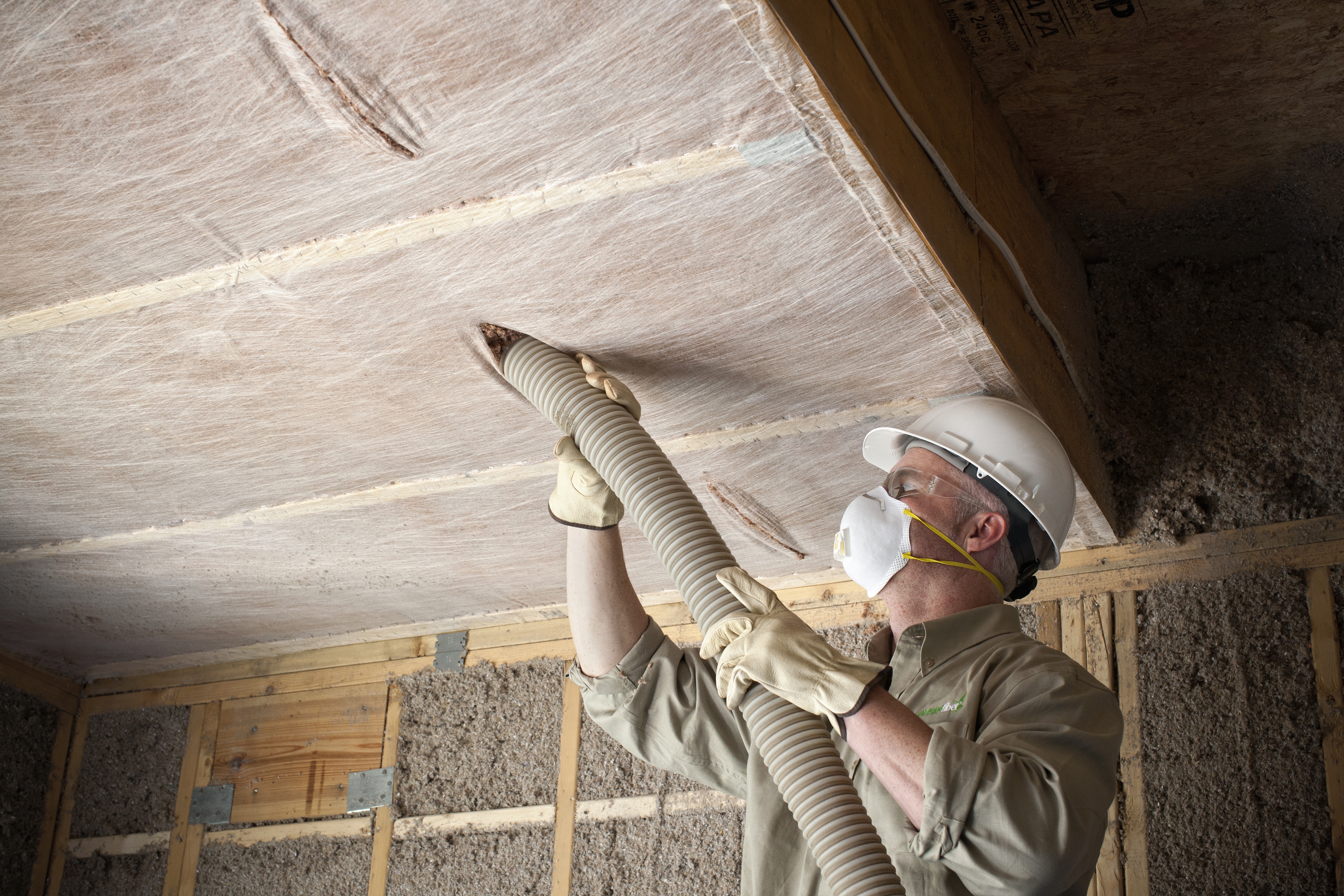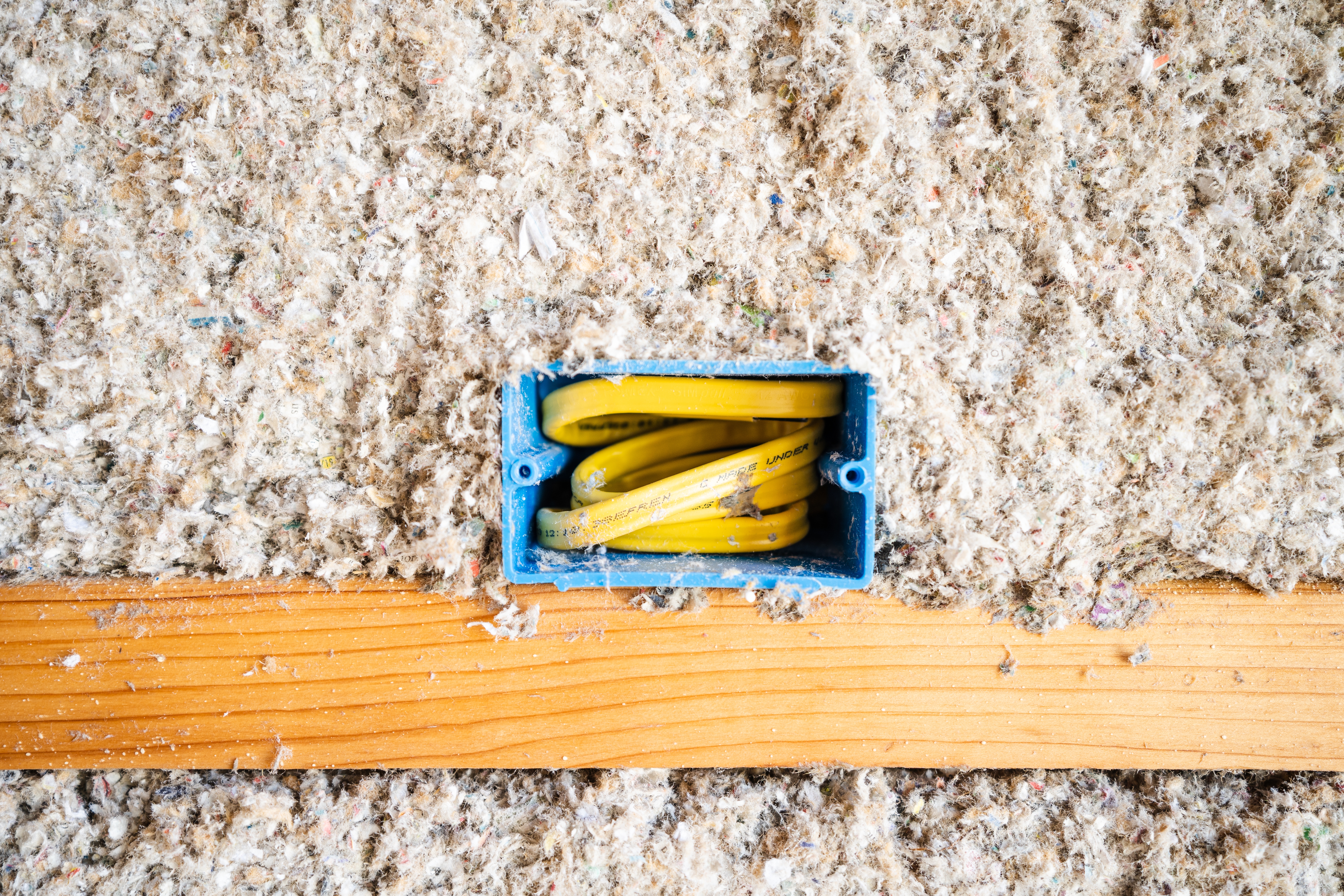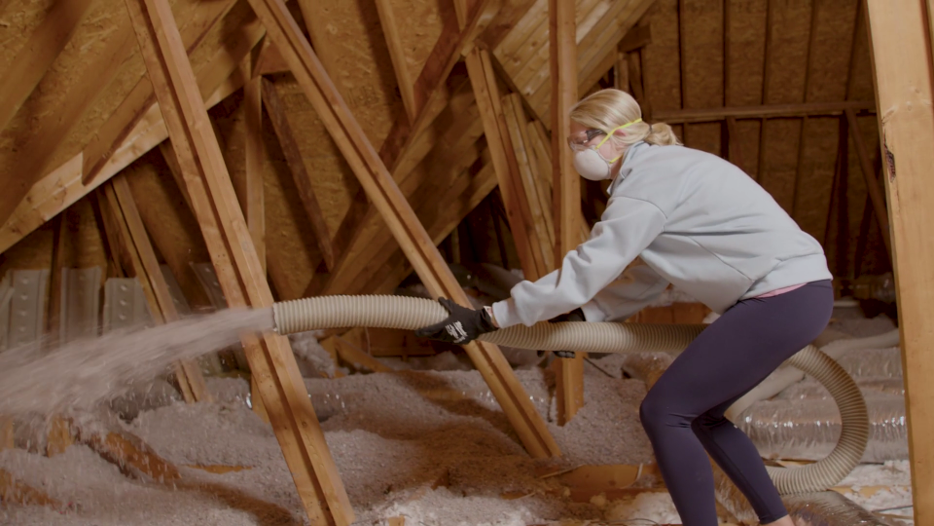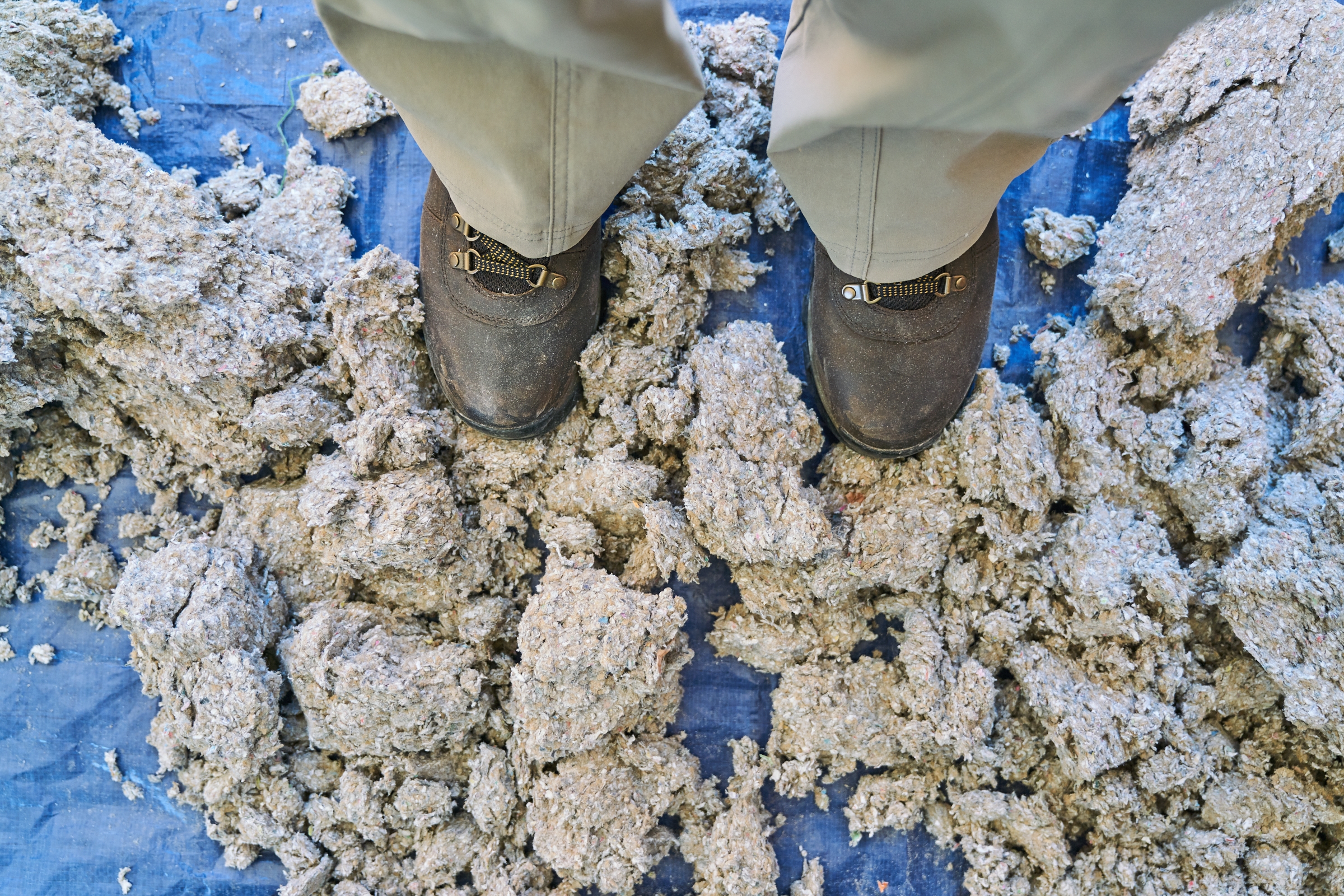
4 Benefits of Cellulose Insulation for Energy Efficiency in Your Home
Choosing cellulose to insulate your home is a wise investment: It can lead to cost savings through reduced energy consumption, contribute to a healthier environment by reducing greenhouse gas emissions and overall energy usage, and — when properly installed — maintain its performance throughout the lifetime of your home. Read on to learn more about the energy efficiency benefits of cellulose insulation, the best areas of your home to insulate for better energy efficiency and why choosing SANCTUARY® by Greenfiber can help achieve all three.
The Basics of Cellulose Insulation
Cellulose insulation is a sustainable insulation material that is made from recycled paper products, including newspapers, cardboard and other paper-based materials. These materials are treated with nonhazardous chemicals to make them fire resistant. Furthermore, cellulose insulation is well known for its sustainable properties and its ability to effectively reduce air leakage and noise transmission. When installed in attics, walls, ceilings or floors, the insulation’s dense fibers create a barrier against air leakage, which helps improve energy efficiency.
How Blow-In Insulation Works to Insulate a Home
Blow-in cellulose insulation works by filling the cavities and voids in walls, attics and floors. This helps to regulate indoor air temperatures by creating a barrier that reduces heat transfer, keeping the indoor environment warmer in the winter and cooler in the summer. The cellulose fibers can tightly pack into even the smallest gaps, ensuring that every crack and crevice is filled while minimizing air leakage and heat loss.
What are the most effective areas of the home to improve your insulation?
By adding cellulose insulation to the following four areas, you can effectively protect your home from air leakage and improve energy efficiency.
1. Attics
The Environmental Protection Agency estimates that approximately 90% of U.S. homes are under-insulated. Your roof serves as a barrier between the interior and exterior temperatures of your home, making the attic a crucial area for insulation. Insulating completed and uncompleted attic areas, rafters, walls and ceilings is vital for temperature regulation and energy efficiency. Tip: If the floor joists in your attic are visible, then it likely requires additional insulation.
By re-insulating your attic and sealing air leaks at the top of your house, you can make rooms at the bottom of your house more comfortable. This can help fix common problems such as:
- Reduced noise from outside
- Less pollen, dust and insects (or pests) entering your home
- Better humidity control
- Lower chance for ice dams on the roof/eves in cold climates
2. Walls
With exterior wall insulation, your home will be less drafty and can achieve a more comfortable environment inside of your home, as the indoor temperatures will be equalized (no hot or cool spots throughout the house or across floors. Insulating exterior walls also reduce the power of outside sounds by 60%¹ to ensure every room in the home remains peaceful and quiet.
3. Roof
By adding insulation to the roof deck, you can reduce the amount of heat that escapes through the top of the home, leading to lower heating and cooling costs. Insulating your roof can also help reduce noise transmission from overhead sounds, creating a quieter and more peaceful living environment. Depending on your climate zone, SANCTUARY works well in cathedral ceilings, such as the one in this in-law suite in Hyattsville, Maryland.
4. Floors
If floors in the unheated areas of the home, such as your crawl space or garage, are uninsulated, they quickly lose conditioned air and heat. Insulated floors help eliminate drafts, reduce moisture and retain heated and cooled air. Furthermore, insulated floors decrease noise.
Use our locator tool to find a professional insulation contractor in your area.
Benefits of Cellulose Insulation for Energy Efficiency
1. Cellulose Insulation Has a High R-Value
The R-value of insulation is an important factor in determining a home’s energy efficiency. A higher R-value indicates greater resistance to heat transfer, making the insulation more effective.
Cellulose insulation is known for its high R-value, typically ranging from 3.1 to 3.7 per inch. SANCTUARY, in particular, has an R-value of 3.7 per inch, providing more effective thermal protection in both warm and colder climates. This is due to the dense composition of cellulose fibers, which trap air pockets and create a barrier against heat transfer.
SANCTUARY cellulose insulation works to stop heat flow three different ways:
- The space between the fibers
- The wood wall of the fiber
- The air pocket within the fiber
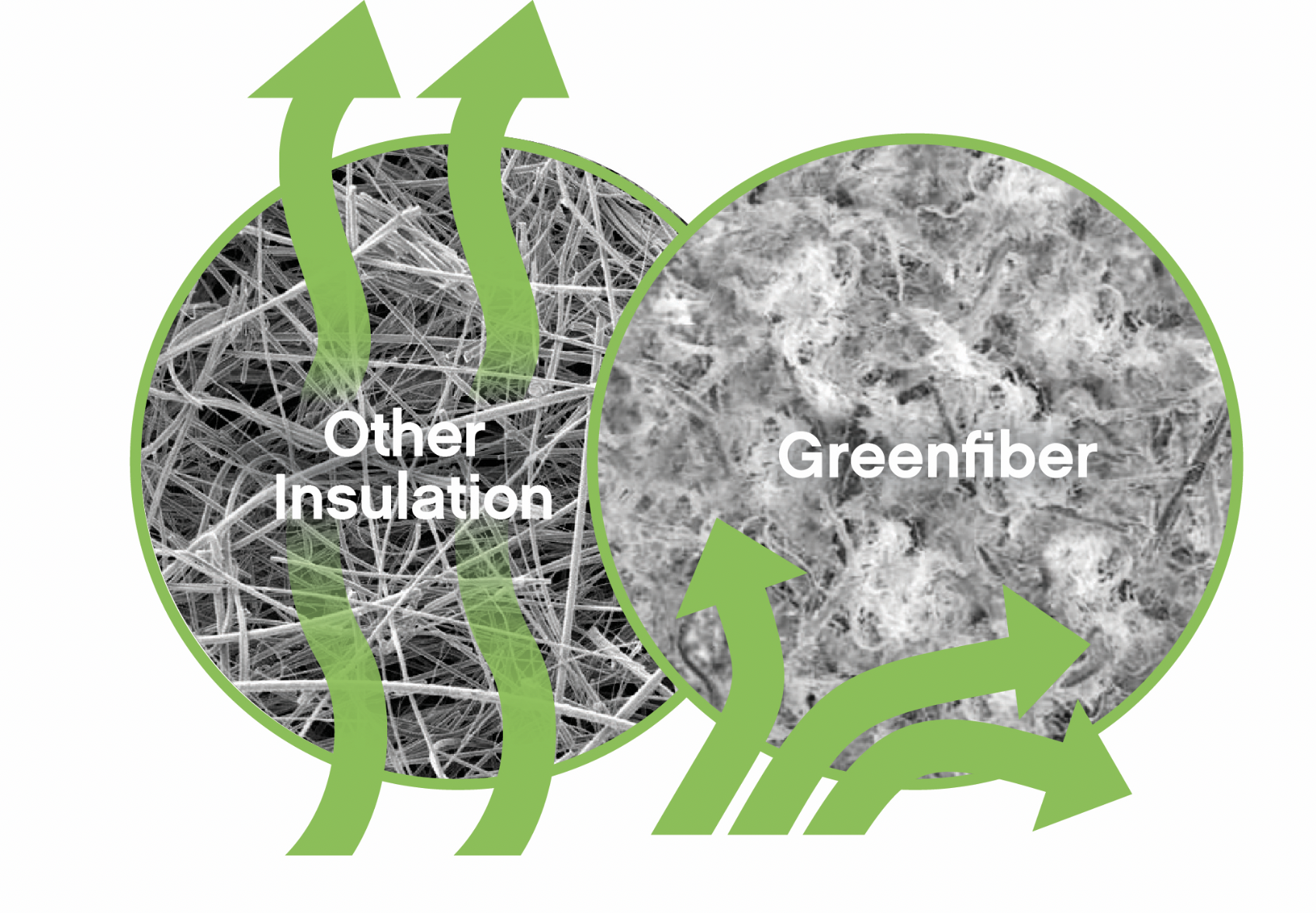
2. Cellulose Insulation Lowers Electrical Costs
When you heat your home in winter, the hot air rises to the top of the house and leaks out in dozens of places. In the summer, the hot air seeps inside the home through those same leaks.
This loss of conditioned air can not only impact the comfort of your household but also result in significant energy wastage. As a result, your heating and cooling system may have to work harder to maintain the desired temperature, leading to higher utility bills. In fact, according to the Environmental Protection Agency, homeowners can potentially save an average of 15% on heating and cooling costs (or an average of 11% on total energy costs) by air sealing their homes and adding insulation in attics, floors over crawl spaces and basements. Calculate your estimated heating and cooling savings as well as greenhouse gas reduction, using theinsulation savings calculator from the Cellulose Insulation Manufacturers Association.
3. Cellulose Insulation Promotes Seasonal Comfort
In cold weather, insulation helps keep the heat inside. In warm weather, it prevents the outdoor heat from seeping in. This helps maintain a consistent and comfortable temperature inside the house, thereby minimizing temperature fluctuations and drafts and enhancing the overall comfort of the home.
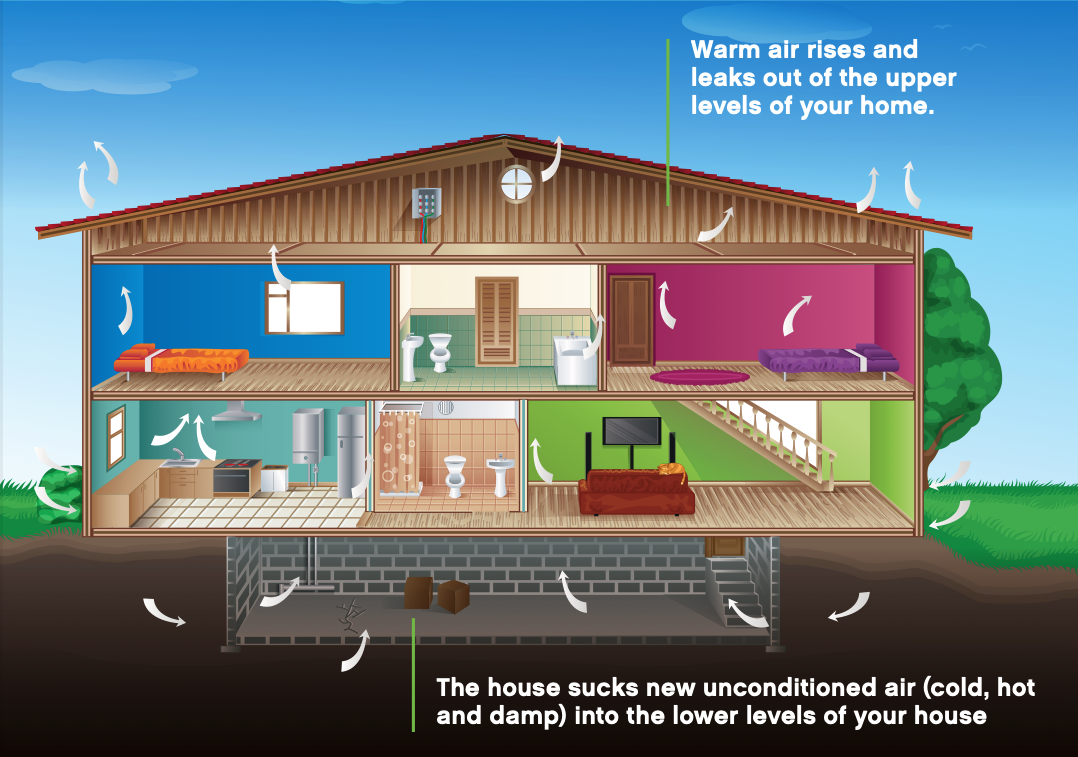
4. Incentives and Rebates that Qualify for Cellulose Insulation
To accelerate the United States’ transition to a net-zero future, the federal government has introduced a range of tax incentives to encourage homeowners to adopt clean energy consumption practices in their homes. For example, the Inflation Reduction Act of 2022 includes an insulation tax credit. This allows homeowners to claim a percentage of their insulation expenses, up to a certain limit, as a credit on their taxes. Energy-efficient home upgrades, such as installing SANCTUARY, an Energy Star®–certified insulation, can qualify homeowners for tax incentives. It’s advantageous for homeowners to explore these incentives, as they can provide financial benefits and contribute to long-term energy savings.
Considering retrofitting your home with cellulose insulation? Learn about the benefits of hiring a Trusted Installer to get the job done.
1 Savings vary. Find out why in the seller’s fact sheet on R-values. Higher R-values mean greater insulating power. Energy analysis of climate zones 1–7 using 2018 IECC reference home comparing R-11 attic to DOE-recommended attic insulation by climate.
- Category: Sustainability

